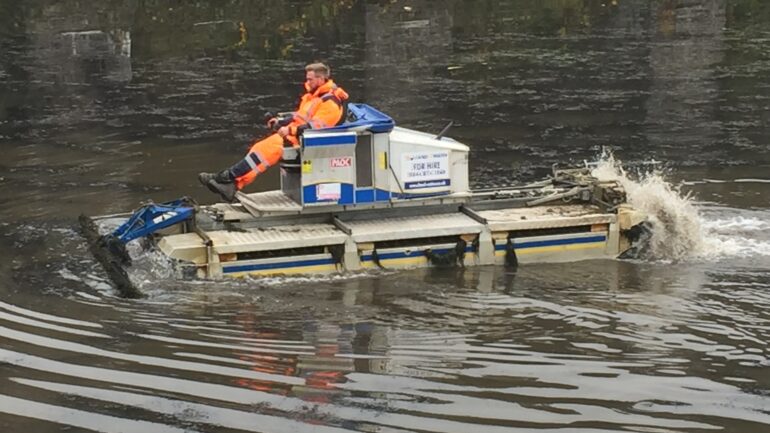Dredging equipment Spring TX commonly used during dredging service is a combination of equipment and tools that work together to perform various tasks. Some of these tools include trailing suction hopper dredgers and hydraulic dredgers. This article will provide information about these dredges.
Hydraulic Dredger
There are several types of hydraulic dredges available. A simple type is called a suction dredger, a simple structure with a pontoon supporting a pump and discharge pipe. More complex models have separate pumps, water jets at the suction inlet, and articulated suction pipes. Some of these types also use spuds to keep them in place. They are primarily used for winning fill material, which can be loaded into a barge that is moored alongside.
Depending on the application, a hydraulic dredger can be powered by a single or twin diesel engine. Some of these engines can be as powerful as 2760kW MCR at 750 rpm and are usually used for dredging operations. Other dredges use auxiliary power units, including small generators and 12-volt DC engines.
Another type of hydraulic dredger is the trailing arm hopper suction dredge, which is self-propelled and uses a similar hydraulic pumping system. This type of dredge is best suited for sedimentation remediation in a water body up to 20 feet deep.
Hydraulic dredging is a good choice for dredging services that need to clean up contaminated areas. This method is the most cost-effective way to clean contaminated sites. In addition, hydraulic dredges can remove large amounts of sediment. DSC offers various environmental dredges, from an 8-inch Moray Class Swinging Ladder dredge to an eight-inch Wolverine or Badger Class dredge. The company can also work with you to customize your dredge to meet your specific needs.
Trailing Suction Hopper Dredger
Trailing suction hopper dredges are self-loading, self-propelled vessels that often have pressurized discharging systems. They feature one or two suction pipes and a trailing drag head. The drag head, akin to a large vacuum cleaner, has nozzles connected to a high-pressure water installation. The trailing drag head is responsible for removing and loosening material from the seabed.
This type of dredger is used in long runs. However, they are not good for tight corners, making them difficult to operate. Nevertheless, trailing suction hopper dredgers are efficient in dredging materials. Therefore, these vessels are commonly used in harbor maintenance and capital projects for dredging services.
Another type of dredger commonly used during drenching services is the self-propelled hopper dredger. This type of dredger works on the Venturi effect and pushes adjacent water into a delivery pipe. The material is then moved to a designated site with the help of a second burst of water.
A trailing suction hopper dredger is self-propelled and can work in protected and unprotected waters. They can travel long distances and are highly maneuverable. They can also suction up material at depths up to 60 meters, which makes them highly effective during dredging services.
Split Hull Hopper Dredger
A split hull hopper dredger is a dredging vessel that can load dredged material in inland waters and transport it to an offshore disposal site. The vessel features hinged decks and a hopper at the bottom, allowing dredged material to be pumped out. Currently, only six of these dredges are in operation worldwide.
This dredging vessel features a clam-shell-shaped hull, which opens and closes using hydraulic cylinders. Its crew quarters and machinery room are situated on the top level of the vessel so that it can be operated from a height above the seabed. This dredging vessel’s hull design and other features make it a versatile piece of equipment.
The dredge spoil is dumped from this vessel via a fixed discharge pipeline. The split hull hopper dredger is more efficient than the standard suction dredgers. Its capacity is measured in cubic yards.
A split hull hopper dredger can range in size and price. A smaller version can be used for transporting dredged material, while a larger one can be used for dredging services. Depending on the size and scope of the dredging project, a split hull hopper dredger is a suitable option.
Split hull hopper dredgers have many features and can be used during dredging services. For example, a split hull hopper dredger has trailing suction arms. The trailing suction arms are pipes that pivot from a pivot on the dredger’s main deck. When the ship moves forward, the pipe will drag along the bottom. A davit hoist unit controls the lower end of the pipe. The suction arm can also be raised parallel to the deck.





